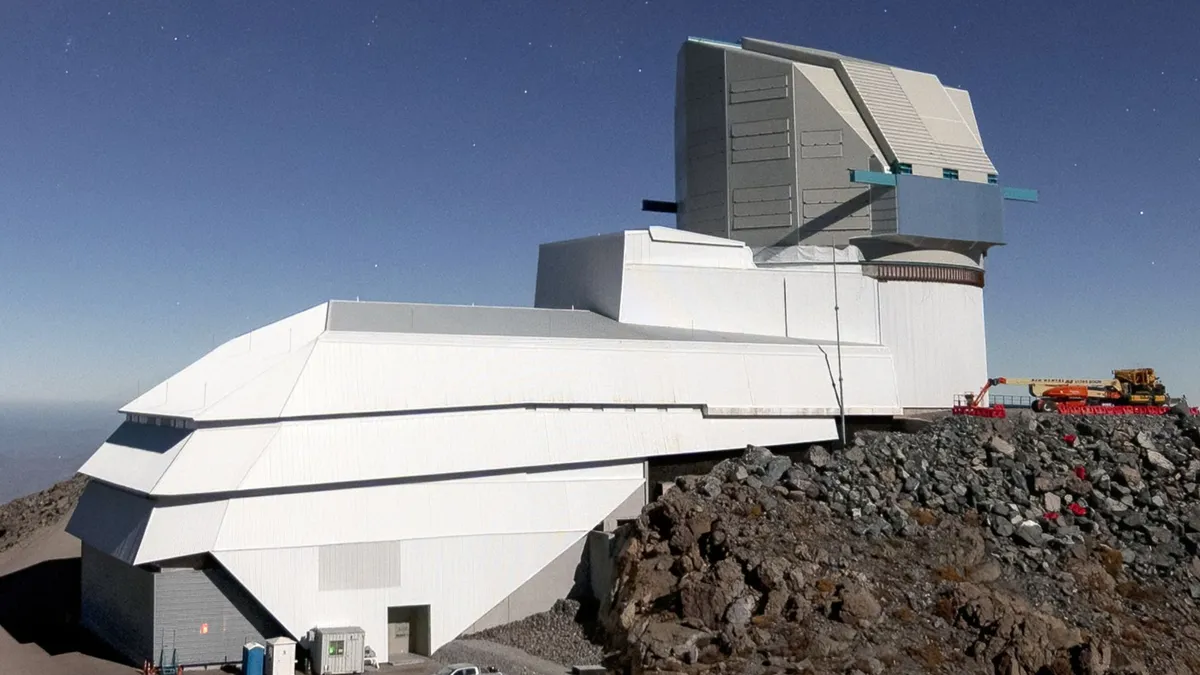
Originally published at The Conversation, this article delves into the fascinating realm of dark matter, the invisible substance that constitutes approximately 85% of the universe's mass. While everything we can observe in space, from the Earth and Sun to black holes, accounts for only 15% of all matter, the existence of dark matter has been inferred through its gravitational effects on visible matter, including light. Despite this understanding, the precise nature of dark matter remains one of the most significant mysteries in modern astronomy.
This month marked the release of the first images from the Vera C. Rubin Observatory, which has embarked on a groundbreaking 10-year mission to investigate dark matter. Named after Vera Rubin, a pioneering astronomer whose work significantly advanced our understanding of galaxies, this observatory is poised to contribute immensely to the ongoing research into the universe's hidden mass. As a historian of astronomy, I recognize the profound impact of Rubin's contributions, and the observatory's name reflects its goal to build upon her legacy.
Situated in the stunning Chilean Andes, the Rubin Observatory utilizes a state-of-the-art 3,200 megapixel camera—the largest digital camera ever constructed—to capture the southern sky's vast expanse. Every three nights, this colossal camera will document an area roughly 45 times larger than the full Moon, generating an astonishing five petabytes of data annually—equivalent to 5,000 years of music in MP3 format. Over time, the observatory will produce a time-lapse record of cosmic events, including supernovas, variable stars, and asteroids, while also delivering the most extensive galaxy survey ever undertaken.
Images captured by the Hubble Space Telescope and the James Webb Space Telescope have illuminated the vast abundance of galaxies in the universe. These deep-field images, taken with long exposure times, reveal that galaxies are not randomly scattered; instead, they are shaped and organized by the gravitational influence of dark matter. The Rubin Observatory aims to enhance our understanding of these galactic structures, expanding upon previous surveys and capturing billions of additional galaxies. Furthermore, dark matter alters the appearance of galaxies through a phenomenon known as gravitational lensing, where light bends around massive objects, providing critical clues about its distribution and properties.
The quest to uncover dark matter's existence dates back centuries, with astronomers initially measuring the motion of planets. Observations of Uranus led to the discovery of Neptune, confirming the need for additional mass in the solar system. In the 1930s, astronomer Fritz Zwicky first coined the term "dark matter" after studying the Coma Cluster's galaxies. He noted a discrepancy between the calculated mass of galaxies based on their speeds and the visible matter present, suggesting the existence of an unseen mass.
In 1965, Vera Rubin became a trailblazer by joining the scientific staff at the Carnegie Institution’s Department of Terrestrial Magnetism. Collaborating with physicist Kent Ford, Rubin employed a sensitive spectrograph to measure the orbital speeds of stars within galaxies. Contrary to expectations that stars farther from the center of their galaxies should orbit more slowly, they discovered that stars maintained consistent speeds regardless of their distance from the center. This finding hinted at the presence of unseen gravitational forces, leading to the hypothesis of dark matter. Despite initial skepticism regarding the necessity of dark matter to explain her observations, Rubin's data laid the groundwork for future research.
Today, Vera Rubin's groundbreaking contributions to our understanding of dark matter are widely recognized. The observatory's naming in her honor in 2019 reflects her lasting impact on the field. In June 2025, the U.S. Mint will release a quarter featuring her likeness, acknowledging her pivotal role in astronomy. Rubin's extensive data collection on galaxy motions has inspired subsequent generations of researchers. Notably, in the 1970s, physicist James Peebles and astronomers Jeremiah Ostriker and Amos Yahil conducted simulations that reaffirmed the need for dark matter, suggesting that its mass could be up to ten times greater than that of ordinary matter in galaxies.
Over its 10-year mission, the Rubin Observatory is set to provide an unprecedented wealth of data, empowering researchers to deepen our understanding of dark matter. As scientists continue to investigate the nature of this elusive substance, the observational advancements made by the observatory will play a crucial role in unraveling one of the universe's greatest mysteries.